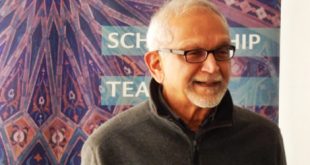With the re-emergence of activism on the part of Shi’i mujtahids and its impact on the ascent of Shi’i community in Iran, Iraq, and Lebanon, scholars have defined a distinct strategic difference between what they characterise as ‘quietist’ and ‘activist’ Shi’i mujtahids.
During the last four decades, the Middle East has witnessed the rise of Shi’i political activism, through the direct engagement of clerical elites in socio-political arenas. With the re-emergence of activism on the part of Shi’i mujtahids and its impact on the ascent of Shi’i community in Iran, Iraq, and Lebanon, scholars have defined a distinct strategic difference between what they characterise as ‘quietist’ and ‘activist’ Shi’i mujtahids. This paper argues that this distinction is based on a misunderstanding of Shi’ doctrines and practices, and that, in the varying political contexts which arise in the Middle East, Shi’i mujtahids are always potentially active. It first introduces an analytical scheme for the study of Shi’i clerical political practices. It then uses this schema to explore recent Shi’i clerical political activism in the region.
Bibliographic Information
Title: The Shi’i Clergy and Perceived Opportunity Structures: Political Activism in Iran, Iraq, and Lebanon
Author: Mohammad R. Kalantari
Published in: British Journal of Middle Eastern Studies
Language: English
Length: 16 pages
 The Shi’i Clergy and Perceived Opportunity Structures Political Activism in Iran, Iraq, and Lebanon
The Shi’i Clergy and Perceived Opportunity Structures Political Activism in Iran, Iraq, and Lebanon
 Ijtihad Network Being Wise and Faithful Muslim in the Contemporary World
Ijtihad Network Being Wise and Faithful Muslim in the Contemporary World
